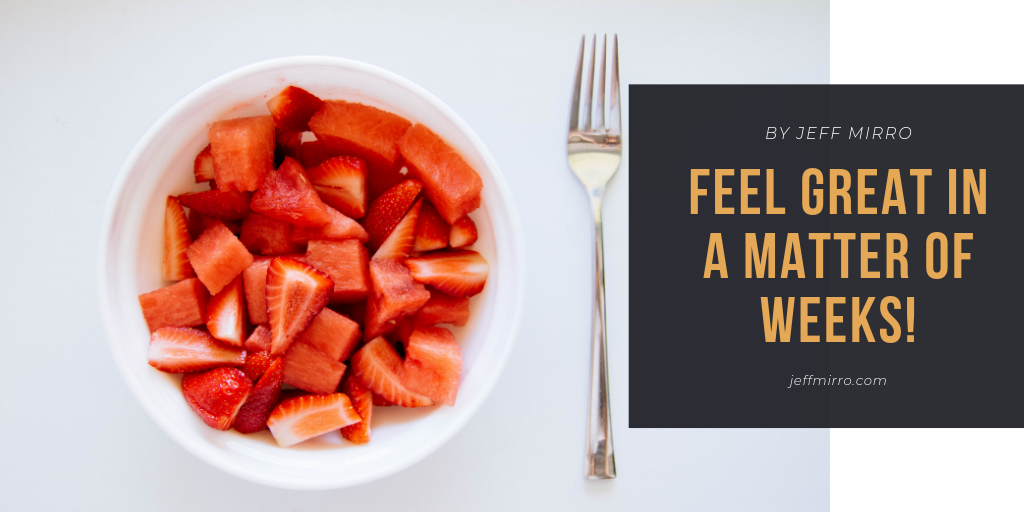Ideally, your whole life would be focused around your health, living a fasting-focused lifestyle, getting in the right nutrition, enough exercise, keeping stress low, and getting enough sleep. But we all know this is just not practical in most cases, and I say this from personal experience. With intermittent dry fasting, in particular, you’re probably going to have to adapt your eating window to your work schedule to make it work long-term, as I have had to recently. One way to do this would be to get on a 16:8 intermittent dry fasting routine.
Things Can Get Difficult When You Work a Full-Time Day Job
Much of my transition into a hardcore fasting-focused lifestyle occurred between mid-March to mid-May, when I was unemployed and had a lot of free time to get more than enough sleep and plan my day out according to my eating schedule, getting good workouts in, and keeping my stress relatively low. But now that I’m back to working a full-time office day job, I’ve found that I needed to modify my fasting schedule and eating window to fit my current working lifestyle. I need to have enough mental energy to get through each day and do my job well. I need to have the physical energy to be able to get up in the morning and do a solid 30-minute workout, and maybe another shorter workout after work, along with longer workouts on the weekend.
16:8 Intermittent Dry Fasting Could Work For You
Although it’s not ideal for the sake of detoxification or autophagy, or even fat burning for that matter, I’ve found that the 16:8 intermittent dry fasting strategy is what’s working best for me the past couple weeks. This means fasting for 16 hours and maintaining an 8-hour eating window. Most days, this looks something like eating a meal around noon or 1:00 p.m. and being done with dinner around 8:00 or 8:30. I’d like to be done eating earlier in the evening, but that’s something that I’m still working towards. The point is, your job is obviously going to have a big influence on how well you’re able to maintain an intermittent fasting lifestyle.
But to further clarify, I don’t even dry fast every day. Some days, I do an 18:6 dry fast or an 18:6 water fast, or a much easier 16:8 water fast. I’d like to couple this type of fasting with longer weekend fasts, whether they’re dry fasts or water fasts, and eventually narrow my eating window on weekdays, but I need to get enough sleep and have my body adapt to the new schedule to a point where I have enough energy each day.
Do What Works For You (But Keep Intermittent Fasting Daily)
The bottom line to all this is to do what works for you, as long as you’re on some type of fasting schedule. Your job and your life can get in the way of what you’d optimally like to be doing with your fasting schedule, along with your workout schedule and the number of hours you sleep, but just do the best you can and be mindful of what’s best for your health in the long run. 16:8 is the weakest of all intermittent fasting routines, but the good news is that research has shown that human growth hormone can kick in as early as 13 hours after your last meal, while autophagy can kick in right at 16 hours. This means that every hour you go past 16 is a huge benefit to your overall health and fat-burning capabilities. And you’re definitely doing better than at least 95% of the population, who never go more than 12 hours without eating on average, and have to eat every few hours so their blood sugar doesn’t crash. If you keep your blood sugar constantly low through a low carb diet along with fasting, and are able to do OMAD (One Meal A Day) or a two meal a day protocol in an eating window of anywhere from four to eight hours, you are doing wonders for your digestive system, mental health, immune system, skin, body fat percentage, and more.
My Plan Going Forward: 18:6 or 16:8 Intermittent Dry Fasting
I am not thrilled with my current level of energy, be it mental or physical, or my fasting/eating schedule, or my exercise routine, since I’ve been back to work. However, I know over time I will adapt and transition into a routine I perform much better on. My perfect scenario would be getting at least 8 hours of sleep each night, keeping my stress levels low, working out for 45 minutes a day, 6 days a week, and about an hour on Saturdays, and eating OMAD, or at the very least one small meal and one large meal in an 18:6 routine, with most days being intermittent dry fasts. As I’ve said many times before, the powerful benefits of even shorter dry fasts are incredible and are worth doing no matter what you’re trying to achieve with your health goals.
But for the time being, 16:8 intermittent dry fasting with two meals is better than nothing, and if even a moderate routine like this works for you and allows you to feel lighter, more energetic, and healthier long-term than stick with it. If you have more serious amounts of weight to lose, this plan will not do much for you and will work very slowly. But it’s still better than nothing. And if you are just slightly overweight or already in good shape and looking to maintain, then a 16:8 fasting-focused lifestyle might be just what you need.

